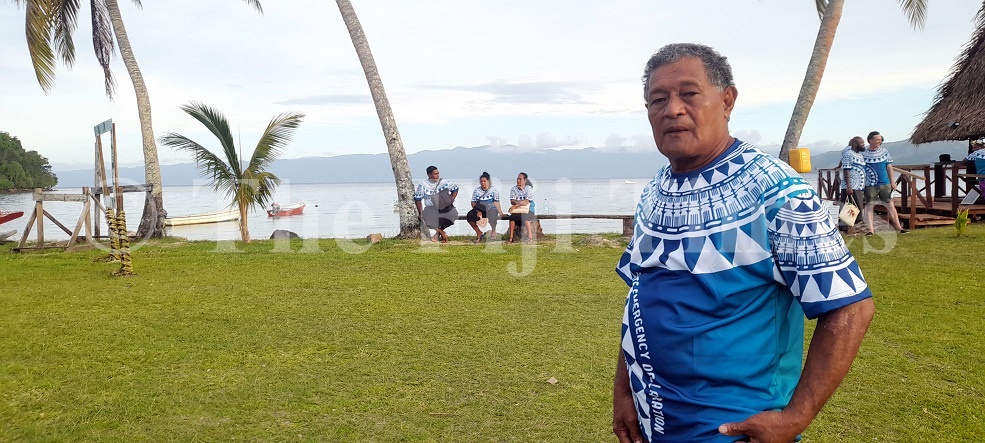In 1946, elders from Tuvalu travelled to Cakaudrove in search of an island that would become home to their future generation.
These elders found Kioa Island, located off Vanua Levu. Last week, the generations of this community celebrated 75 years of living on Kioa.
Kioa Island Council chairman Lawrence Nikotemo said the annual event was part of their tradition, as they remembered their elders for making a wise decision in securing the island.
“A group of about 20 men from Tuvalu travelled to Fiji in 1946 to purchase Kioa Island, but they didn’t settle right away,” he said.
“In 1947, they returned to settle on Kioa and we have lived here ever since and that is why we are celebrating 75 years because we returned a year later to settle down.
“We came from Vaitupu and our ancestors came because they knew that one day, the island of Tuvalu will become too small for everyone so they purchased Kioa.”
Mr Nikotemo said their forefathers were wise men who would have envisioned the developments in Fiji which they were enjoying today.
“They left behind their island home, travelled by canoe through rough seas across the Pacific waters for our sake and we are blessed to be in Fiji which has become our home.
“Their commitment, sacrifices made back in the 1940s is a story we continue to share to our children and their children and the celebration of 75 years is part of that.
“Today, we are enjoying the hard work and commitment of our forefathers because our children are being educated.”
History says that the Tuvalu elders had heard about three islands on sale which included Rabi, Wakaya and Kioa.
They used money from the American Armed Forces during WWII to purchase Kioa and settled on October 26, 1947.
The first settlers were a group of 37 from Vaitupu who travelled on a boat known as Avahou which arrived at Kioa on a Sunday afternoon.
In an article published in this newspaper on November 1957, it mentioned that these 37 villagers brought 15 pounds worth of food with them to last them for a few days.
“Their fares were paid for by the Vaitupu community who had purchased the island of Kioa for their surplus population. It had no buildings or houses,” the article said.
“The village site had a white sandy beach, a deep anchorage up to the shore, and a picturesque fringe of coconut trees along a horseshoe bay.
“Snuggled in among these palm trees may be seen the many houses erected, Fijian style but all with raised wooden or bamboo floors.”
The article added the centre of the village had a village hall that doubled as a church.
It also had a store, believed to have been opened with a stock of 300 pounds.
According to the island council, within a year that original 300 stock ran dry, the villagers also purchased a boat with money from Vaitupu which was remodelled by Kioa islanders for better sea transport service.
“In the 1950s, the people of Kioa used to produce 12 tonnes worth of copra in one year. Of the original 37 immigrants who arrived in 1947, by 1957 seven men and four women, with their children, grew tired of the life on Kioa and returned to Vaitupu,” the 1957 The Fiji Times article said.
“In 1957, 20 people had died and were buried on Kioa while births were around 40 to 50.
“Additional immigration between 1947 and 1957 made population numbers rise to about 200 within 10 years.
“The village site of Salia was once occupied by the original inhabitants of Kioa Island from Cakaudrove, until the island was sold to a European to cover a debt.
“Oral history has it that the original Fijian settlers of Kioa Island were members of the Salia mataqali (clan). Almost a hundred years ago, clan members were forced from Kioa Island, their homeland, by the then Tui Cakau, the paramount chief of the Cakaudrove Province.
“Out of respect for the authority of Tui Cakau, in those days, no ordinary person could challenge any decision that he made, so when the Tui Cakau wished to sell land, the traditional occupants were not in a position to challenge the sale.
“Objection to the wishes of the Tui Cakau resulted in death as his wish was life and death for his subjects and thus the members of the clan were moved to Buca Village on Buca Bay on the mainland of Vanua Levu.”
The article said around 1914, with the change in ownership of Kioa, the Salia clan were forced to leave their home.
Mr Nikotemo said such sacrifices of these elders should rightly be remembered as they left Vaitupu, the largest of the eight islands that make up the nation of Tuvalu, which was once known as Ellice Islands.
In the late 1980s, the late Tui Cakau Ratu Penaia Ganilau, former Fiji president recognised and accepted the people of Kioa, making them his own people. One of the elders of Kioa, Lotemau Fiafia, once said : “For this recognition we are grateful as a people and we are proud to be ai Ca’audrove.”



